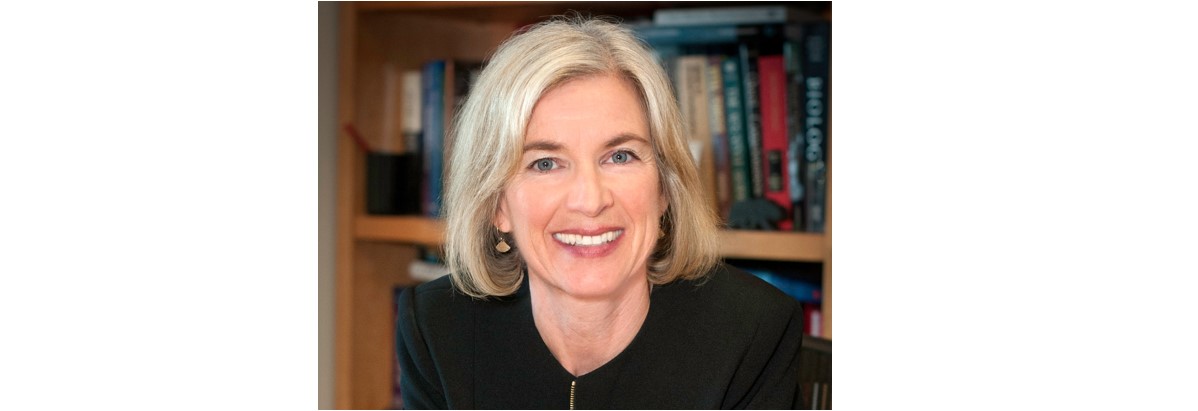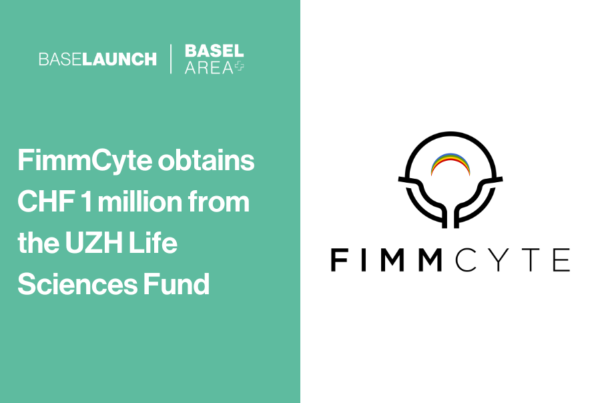
When Jennifer Doudna gave her keynote at Basel Life in September, the auditorium in the Congress Center was packed. Susan Gasser, Professor of Molecular Biology at the University of Basel introduced Doudna as groundbreaking and extremely innovative. The Professor of Chemistry and of Molecular and Cell Biology at the University of California, Berkeley was on top of Gassers wish list for the Basel Life. The leading figure of what is known as the CRISPR revolution among scientists sat down with BaselArea.swiss during her stay in Basel to talk about her lab, flexible career paths and what makes a great researcher.
In your keynote you stated that you always did a lot of basic research. What changed for you and your lab after you published the CRISPR findings?
We are still doing deep dives into CRISPR technology. A lot of our work is about discovering new systems and looking at RNA targeting and integration. These things do not necessarily have to do with gene editing, but are our primal motivation. But there were quite a few changes. We started doing a lot more applied work. That led to all sorts of interesting collaborations with people that I would probably never had the chance to interact with in the past. It has been a great opportunity to expand both deeper and broader.
How do you manage to direct your students and postdocs in your growing lab?
I hire really good people that can focus on both innovative initiatives mixed with projects where a clearer outcome can be forecasted. I give them some guidance and then I cut them loose. We also build teams in the lab which works really effectively. I do not always get it right, but when I do, amazing science happens.
You live in an area where entrepreneurship seems to be some kind of lifestyle. What is your view on the environment in Europe for both doing research and creating companies compared to the benchmark California?
There are some interesting – probably cultural – differences in the way people approach science. At Berkeley, a lot of our students are planning to go into academia. And a lot of students in California not only want to go into industry, but want to start their own company or join a startup. From talking to my Swiss colleagues, it sounds like many students in Switzerland are uncomfortable with that. They want to go to a large company and get a nice salary. Nothing wrong with that. Still, I think that it is good to encourage students to take a risk and to try something that is outside of their comfort zone.
How does that work out in Berkeley?
Two of my students started companies with me directly based on their work in the lab. One company creates new technologies that will be useful therapeutically or in agriculture. In the other case, we are figuring out how to deliver gene editing to the brain. Both students became CEOs and were able to do all the steps it takes to build their company, deal with the legal stuff and funding, conceptualize the business plan and the science. They had to hire people, build a team, and make deals. I always tell those students, I could never do their job.
How do you motivate students to take that step anyway?
I think one of the reasons that we have a lot of entrepreneurship in the bay area is because Silicon Valley is around the corner. That kind of mindset permeates everything. My kid sees young entrepreneurs who are not that much older than a teenager building the next robotics and AI companies. Granted, there is lots of failure for every single success. But teenagers see a successful person and feel motivated to give it a shot.
How can a culture like that be created?
You cannot replicate Silicon Valley culture. But I think you can create a culture that values risk taking and that validates people who do things that are not traditional. If you try something and it does not work out you should not be penalized. Instead, you should be able to go back and get the job at the big corporation. If we encourage our students to see all those options from academia to corporation and startup, they realize that they do not necessarily have to commit themselves to one path for their entire career.
Were you ever tempted to switch sides?
I toyed with it. Back in 2009, I left my job at Berkeley and joined Genentech as a Vice President of basic research. I only lasted a couple of months.
Why was that?
From the outside, it seemed like an exciting way to take my research in a much more applied direction. When I was inside I realized I was not playing to my own strengths. Instead, I realized what I am good at doing and what I really like. It all boiled down to creative, untethered science. I love working with young people and I like creating an environment where they can do interesting work. Not that I could not have done that with Genentech, but it was very different. The process was super painful, but also valuable. I returned to Berkeley and decided to go with the reason why I am in academia: crazy, creative projects that might not be clinically relevant but are interesting science. That was when I decided to expand the work on CRISPR. Had I not made the foray to Genentech and then back to Berkeley, I might not have done any of the CRISPR work.
One topic you are dealing with is the unsolved patent struggle about CRISPR Cas9. Does this effect your work?
I try to look at it very pragmatically. Because ultimately I am an educator. You could say this is my own education. I have learned a huge amount about the patent and legal process, some of it unpleasant. Someday I will write a book about that.
Another jury might be more distinctive on your achievements: You are a hot candidate for the Nobel Prize. How does that make you feel?
I try not to think about it too much. Yet, I feel very humbled. It makes me take a step back and ask myself: What is the purpose of prizes like that? I think they highlight science, the advances that are made and how these might influence people’s lives positively. I did not chose this job to win prizes, but because I really love science.
Is that enthusiasm for science what makes a great researcher – or is there a magic formula?
I think it is a combination of willingness to try new things coupled with a willingness to listen to people. I have seen these extremes both in myself and in my lab. I have real maverick students with creative ideas. But they can never follow a protocol because they are sure they will do better. This often does not lead to good science. The flip is true as well: If you always just follow protocols and never take a step out of the procedures you also do not create the most interesting science. We usually set up one line of experiments that are following a path and where we will surely get some data that are of interest for us. The second project is something that is of interest to the student. This mixture often leads to the best science.Let’s face it: You do not get rich in academic science. The joy in science is the freedom of making discoveries, of finding things out. I tell students: ‘If you stay in academic science, play with that.’ You should always have something a bit crazy cooking on the back burner. That is what makes it fun.
Interview: Alethia de León and Annett Altvater, BaselArea.swiss
Jennifer Doudna (*1946) is a professor of chemistry and of molecular and cell biology at the department of chemistry and chemical engineering of the University of California, Berkeley. She is a member of the Howard Hughes Medical Institute, the Lawrence Berkeley Lab, along with the National Academy of Sciences and the American Academy of Arts and Sciences.


